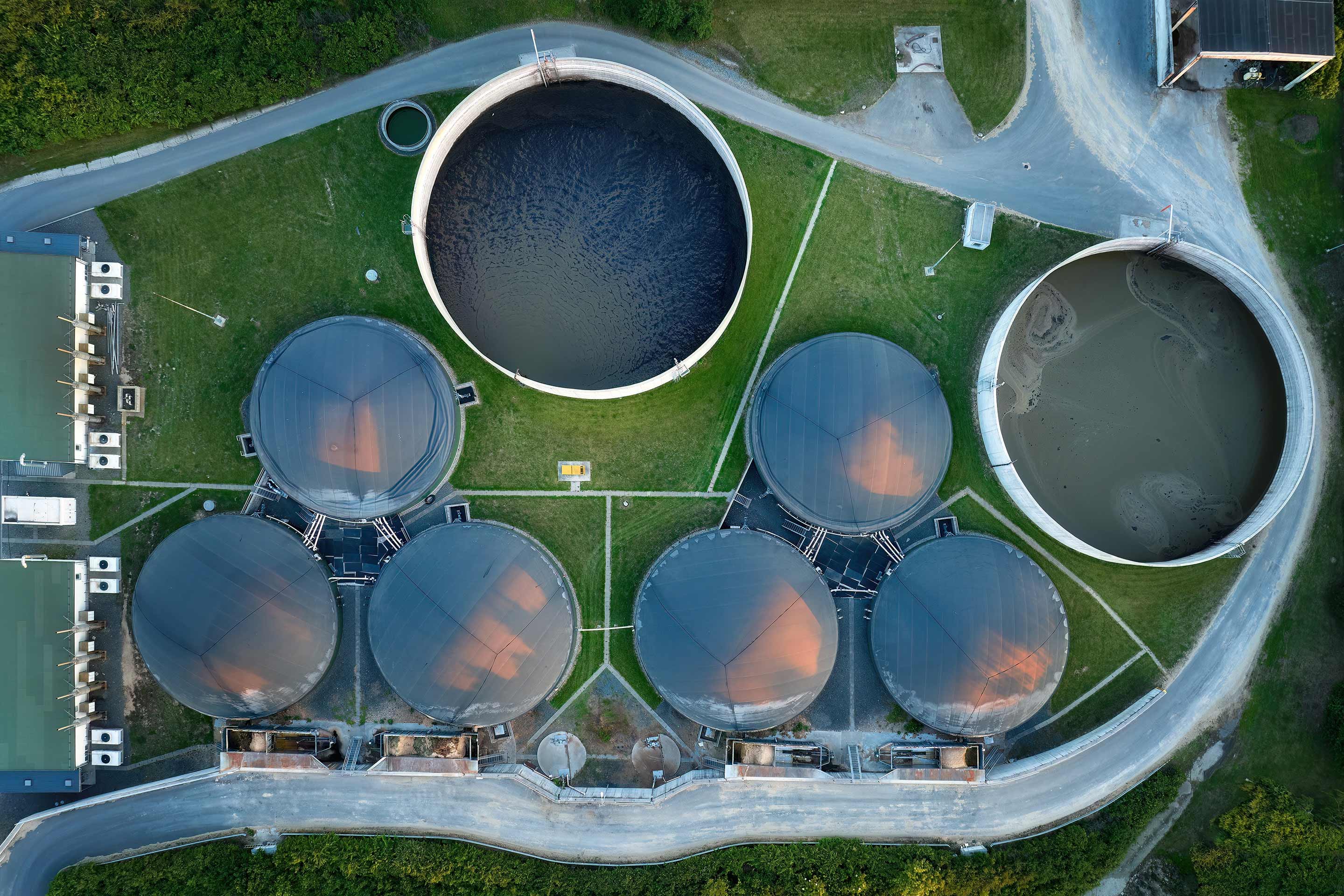Biogas is a fuel that’s produced from the fermentation of organic matter, including agricultural waste, manure, municipal waste, plant material, sewage, green waste, wastewater, and food waste.
In one form or another, biogas has been used as a source of power generation for over 100 years, with methane from sewers powering gas lamps in London back in the late 19th century.
As we look towards a more sustainable future, biogas has become increasingly relevant, and technology had advanced to enable the more efficient and widespread generation of electricity from biogas.
How biogas is providing carbon-neutral power generation
“The biogas market is very interesting, because from a sustainability point of view, it’s as carbon neutral as possible,” David Cafarelli Senior Manager OEM Sales & Application Engineering at Accelleron, explains.
“Referring to the carbon cycle, you’re recycling carbon by reusing it in digesters, and then burning it again together with the produced methane. This means the carbon doesn’t come from fossil fuels – it’s not taken out of the ground in the form of oil or gas. It instead uses carbon that was captured by vegetation and other organic matter, effectively recycling it rather than introducing new carbon.”
Along with sustainability benefits, biogas plants can also be cost-effective to operate when all outputs are used (electricity, heat and fertilizer from the digested residuals). “You already have the leftovers from industries such as farming, and effectively all that’s required is a digester to process the waste,” says David. “Capital Expenditure (CapEx) costs can be a typical deterrent, however.”
Digesters are sealed and insulated vessels with controlled heating and mixing. Waste is processed into a slurry and pumped into the digester. Bacteria can then feed on the waste to produce biogas, through a process called anaerobic digestion.
“The outcome of that is CH4 – so basically biomethane,” says David. “From a cost perspective, once you invest in the infrastructure for the digester, you can avoid the costs of buying natural gas. Over a period of 10 years, this can pay for itself.”
Along with cost and sustainability benefits, biogas also offers flexibility. It can be used for larger scale power generation or with microgrids. Along with electricity, it can also be used to generate heat that can also be used for the digestion process, for nearby industry and homes, and for applications including commercial greenhouses, delivering further sustainability benefits as a result.
The challenges of biogas
“One of the challenges for us is that biogas can be quite a dirty fuel if not properly cleaned and burning biogas with high amounts of sulfur can be corrosive not only to turbocharger components, but also for the engine,” says David. As consequence, this can have a negative impact on the operational life of engine and turbocharger components.
This is where the digesters can make a big difference. An increasing number of digesters now feature technology that can reduce sulfur to clean up biogas. As a result, biogas currently falls largely into two different categories – 40% methane and 60% methane.
Running dirtier biogas, engine and turbocharger manufacturers face shorter maintenance periods, with the need to replace components such as injectors or spark plugs more frequently to keep engines running efficiently.
Why Accelleron’s turbochargers are ideal for biogas
“Accelleron has a lot of experience with biogas,” says David. “We have a robust turbocharger design concept which enables us to keep competitive service maintenance intervals when running biogas. Our field-proven turbochargers running biogas have gathered more than 180 million running hours to date. Of course, when running on dirtier biogas, we typically recommend lower TBOs (Time Between Overhauls) to keep components clean and avoid losing performance. This preventive approach helps to avoid further costly damage. This TBO increases significantly when running on clean biogas, however.
“With more and more digesters featuring technology that results in clean biogas, our turbochargers remain in good condition even if we keep the same maintenance intervals that we have for natural gas, and we’re easily looking to match the same TBOs.”
The modularity of Accelleron’s turbochargers also makes a difference, says David. “Even if the engine is originally created to run on natural gas, and you want to change it to run on biogas, we can change the thermodynamic parts on the turbocharger to make this possible.”
The future for biogas
While biogas currently makes up a tiny proportion of the power generation market, representing around 0.1% of natural gas demand, it’s only likely to grow over coming years as we see a shift to the use of sustainable feedstocks and the increasing need for renewable energy.
This is where biogas is ideal. As the IEA explains: “By transforming organic waste into a renewable energy resource, the production of biogas or biomethane offers a window into a world in which resources are continuously reused. A world where the growing demand for energy services can be met while offering wider environmental benefits.”
Image credit: Shutterstock / Martin Mecnarowski














